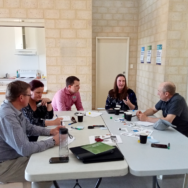Diversity tends to be a misused buzzword and yet it seems to be the magic sauce for high performing teams.
In this article, I explore the importance of embracing diversity and growing the team’s performance for a stronger company. McKinsey has found in its study of 366 companies across the US, the UK, Canada and Latin America that companies in the top quartile of gender diversity are 15% more likely and of ethnical diversity even 35% more likely to outperform their competitors. This suggests early adoption of creating a diverse work culture, strengthening the talent pipeline and leadership team the more likely a company will achieve a competitive advantage.
So why is it that so many leaders still fail to follow the recipe?
Pat Wadors outlines in the Harvard Business Review that diversity efforts fail when employees don’t feel that they belong. Let’s face it; creating a diverse team for many companies is the equivalent of creating a colourful team of different minorities. Greg Walton, a psychologist at Stanford University showed in his research that mitigating threats to the sense of belonging, helps minorities significantly reduce stress levels, consequently improving physical health, emotional well-being, and performance. And thus, Pat argues, creating a wide sense of belonging in the team and company is necessary to achieve the competitive differentiator of your diversity. So far so good; Not only do we need a mixed bag of people for better returns, but we also need to ensure all individuals feel that sense of belonging.
It takes awareness and good interpersonal skills to use the diversity of thoughts for the creation of innovation, improved ways, and better performance.
Now, that is where perhaps many leaders fall short. They lack the belief in diversity no more than what their Key Performance Indicator targets suggest. I’m a strong believer that when leadership fails to turn diversity into performance and financial returns, it is closely related to the ways in which organisations structure their diversity and inclusion programs. In most cases, a team leader is given a target to simply increase easily measured diversity indicators such as gender or ethnicity. Some organisations might even try to cast the net wider and include LGBT targets or age diversity.
The question remains, are these measurable numbers really achieving diversity of thoughts and therefore creating a drive for innovation and better performance?
Interestingly a Forbes article suggests that effective leaders recognise the importance of embracing all differences within their teams to extract the best outcome, fostering a culture of continuous improvement, innovation and initiative. Teams where different perspectives and experiences meet, achieve outcomes and innovations far greater than what an individual could achieve. Incredibly, it is subtle diversity such as different perspectives, personalities and backgrounds that a leader needs to be aware of to realise the competitive advantage of diversity.
Don't know how to lead change?
Don't have the right tools to start?
Let our industry experts and trainers train and upskill your people.
Drawing on my own experiences, recently I met one of my fellow consultants for a coffee. And whilst we were catching up, we also had our usual chat about what is happening in the industry right now. He was telling me a sad story about diversity efforts that went south. An area manager in his company was pressured to hire a lady from another department into the supervisory role at the mechanical workshop. She had shown great leadership in her department and was widely respected by the workshop crew for giving practical advice and help.
However, the area manager was worried about the safety impact of appointing her, given the lack of her technical experience in this area. He decided to veto and subsequently left his role. Shortly after, the lady was appointed and the diversity achievement celebrated. It saddens me to hear stories like this because I don’t ever want anyone to say behind my back, that I only got a gig for my gender. I ask myself if we are missing the point of building a diverse culture when diversity equals a gender quota.
"Developing positive diversity tension takes an understanding of both the big things and the small things that form unique cultures, including leadership and work styles; decision-making styles; information-sharing methods; and motivations."
Diversity can be a double-edged sword presenting unlimited possibilities for misunderstandings. Therefore, to be successful in converting diversity to dollars, leaders need to be comfortable dealing with diversity tension using it as a creative power for making quality decisions. Marshall’s article hits close to home for me, as he writes that developing positive diversity tension takes an understanding of both the big things and the small things that form unique cultures, including leadership and work styles (for instance formal vs. informal); decision-making styles (e.g. intuitive vs. analytical); information-sharing methods (do people prefer written, oral, face-to-face, text, email, video conference, etc.); and motivations (these could be power, achievement, affiliation, money, etc.).
It is not only the awareness of other’s preferences but also our own. Professor Roy Y.J. Chua’s research at the Harvard Business School shows that awareness of our own biases and assumptions can go a long way towards improving creativity in diverse situations. This goes to show how critical good leadership and interpersonal skills are to understand and recognise diverse personalities and behavioural preferences and harvest them for better team performance.
It is important to understand that diversity of thoughts is created through many factors such as age, gender, ethnicity, cultural background or sexual orientation as well as your upbringing, your work or life experience and your personality and behavioural preference style; The latter being significantly harder to measure and determine. Nevertheless, all these factors are equally important when building a great and successful high performing team. Once you tune into this broader view of diversity you will understand why I believe that the term has been much misused and its potential not been realised by many organisations and leaders. If you look closely diversity is everywhere. People are just not like for like. Rather, they possess different views, ideas, motivations, competencies, methods and problem-solving capabilities. However, because we are different, it takes awareness and good interpersonal skills to use the diversity of thoughts for the creation of innovation, improved ways, and better performance.
Not ready to work with us yet?
Receive monthly insights and information to your inbox for free to help you improve your change leadership skills.

“Their monthly insights are always thought-provoking and interesting.”
Sabine Powell, GM Technical Services
MMA Offshore
Over the years, I have witnessed great and poor leadership. Good leadership creates and recognises the diversity in a team. It orchestrates the team to overcome differences and difficulties, creating one (or even more) improved ways of working. In a team with a common understanding that differences are valuable and where it is encouraged to voice and explore different ideas and options, innovation happens quite naturally.
So how can a team leader improve?
Aside from working towards given diversity KPI’s, a leader should follow these simple three steps to gain value from the diversity in the team:



Recognise and begin to understand the diverse personalities present in the team.
Work towards a team culture of trust by raising awareness and pride about the team’s diversity.
Mentor and coach the team to utilise the diversity of thoughts inside the team and even across the larger organisation and professional networks to achieve better outcomes.
"Remember that diversity tension can be the very energy you need to create something better. The rest is just Business as usual."
If you enjoyed this article, don’t forget to LinkedIn, add your comments and share it with your network. Feel free to follow us to receive future articles.
Cheers,
Eva

Eva is one of the masterminds behind Approach Services' blog and The 6 Cents of Change. She is an innovator, trainer and change manager. Her work has been published in the Schmalenbach Journal of Business Research. In her spare time, she enjoys camping with her two little boys and permaculture gardening.
Subscribe to our monthly newsletter The 6 Cents of Change and follow us on LinkedIn to learn more!









